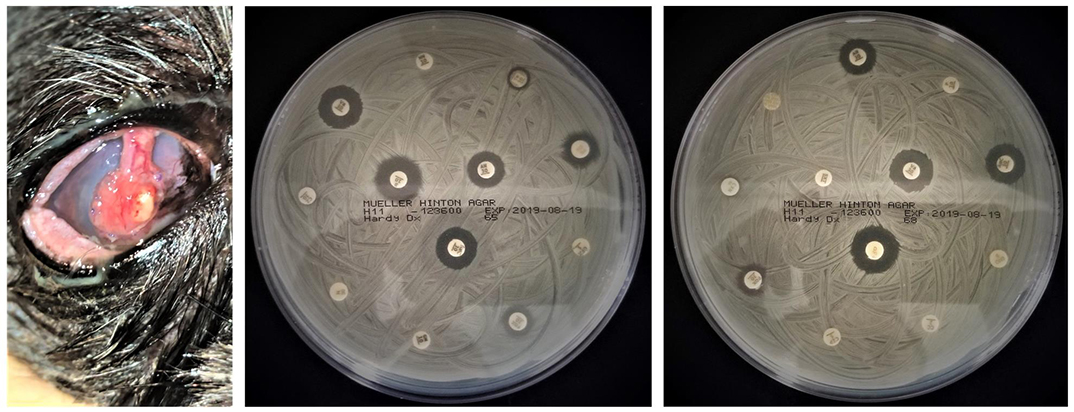

About Us
Welcome to the Ocular Microbiology Laboratory of the Animal Eye Consultants of Iowa. We are the very first veterinary service strictly focused on providing veterinary ocular microbiology services in the USA.
Why submit your cases to us?
- We use antibiotic susceptibility panels that are clinically relevant to the ophthalmic bacterial infections
- Bacterial growth from patient ocular samples in our laboratory is currently 74% which is substantially higher than reported in the veterinary and human ocular microbiology literature, due to the uniquely developed protocols in our laboratory
- We are strictly focused on ocular and periocular diseases, and we continuously collaborate with veterinary ophthalmology specialists to gain better understanding and significance of obtained microbiology results for the observed clinical condition
Antibiotic susceptibility panels are analyzed according to the latest Clinical and Laboratory Standards Institute (CLSI) guidelines.
Example of aggressive corneal infection resulting in the central degradation of the conjunctival pedicle graft 4 weeks after surgery by Staphylococcus pseudintermedius

Amikacin - R
Bacitracin - S
Cefoxitin - R
Gentamicin - R
Neomycin - R
Ofloxacin - R
Polymixin - R
Tetracycline - R
Tobramycin - R
Vancomycin - I
Ciprofloxacin - R
Clindamycin - R
Doxycycline - R
Enrofloxacin - R
Cephalexin - R
Marbofloxacin - R
Penicillin - R
Sulfamethoxazole/Trimethoprim - R
PBP2A – positive
Why pursuing ocular microbiology sampling in patients with corneal ulcers?
- While empirical use of topical antibiotics is commonly accepted practice for initiating treatment of corneal ulcers, there is a worldwide trend in increased resistance of ocular pathogens to routinely used topical and systemic antibiotics
- Starting an aggressive antibiotic treatment does not necessarily guarantee the successful outcome, due to the high risk of the antibiotic resistance as demonstrated in our longitudinal study over the period of 3 years
Based on the analysis of microbiology isolates in our laboratory there is currently 40-84% chance that the use of single antibiotic for the treatment of canine stromal corneal ulcers will be effective, while combined use of two to four antibiotics may be effective in 57-99% of canine patients with corneal stromal ulcers.
Percentage of susceptible (S) bacterial isolates to a single and combination antibiotics.